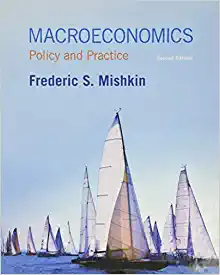Question
Read the article and answer the following questions i.Why has India relaxed the rules governing foreign investment? ii.What are the sectors that will receive approvals
Read the article and answer the following questions
i.Why has India relaxed the rules governing foreign investment?
ii.What are the sectors that will receive approvals for 100 per cent FDI?
iii.How will the increase in capital investments will affect the Indian economy? Explain using production function graph.
iv. How will technological change will affect Indian economy? Explain using production function graph.
The FDI big bang
by Shweta Punj, Sandeep Unnithan & M. G. Arun
INDIA TODAY 23 JUNE 2016
The Narendra Modi government makes its most audacious push for Foreign Direct Investment. Will it deliver the mega bucks? Union commerce minister Nirmala Sitharaman rolled out the specifics of the policy; India had flung its doors open wider to foreign investment. Foreigners could now own airlines, set up food processing firms, defence manufacturing units and buy pharmaceutical companies.
It was the most assiduous wooing of FDI in the 20 years since the government had first looked to foreign exchange as a fuel to kickstart the engines of its economy. Six FDI sectors pharmaceuticals, food processing, information and broadcasting, air transport, single-brand retail and defencesaw approvals for 100 per cent FDI.
'FDI ghar baithe baithe nahin aati (FDI doesn't come sitting at home),' Union external affairs minister Sushma Swaraj told the media in New Delhi on June 19. She was explaining her government's massive diplomatic outreach where it hopes to have established contact with all the countries of the world by the year-end. Swaraj identified the number one objective of this outreach: to increase FDI in India, the stated aim of various governments since the dawn of economic liberalisation 25 years ago.
They have tried to attract and promote FDI to supplement domestic capital, technology and skills to accelerate economic growth, with mixed results. Until 2005, FDI inflows into India accounted for only 0.8 per cent of the global total. Successive governments, including the UPA, have adopted the incremental approach to increasing FDI. But under the Modi government, FDI has been pursued with missionary zeal. In 2015, India attracted $44 billion in foreign investment, or 2.51 per cent of world FDI flows.
The reasons for the government's FDI zeal are crisis-driven. The Indian economy faces a threefold challenge, as pointed out by a World Bank StudyIndia Development Update released on June 20. India, the report says, needs to activate its stalled enginesagricultural growth and rural demand; trade; and private investmentwhile ensuring that the active engines, pickup in industrial activity and the services sector do not run out of fuel. From a peak of 24 per cent in 2009-10, gross capital formation grew at zero per cent last year. With private investment depressed, the government is turning to the world for investment.
Easing FDI across sectors and placing most sectors on the automatic route, it essentially means investors can skip the layers of India's notoriously tardy bureaucracy if they want to invest in the country. It is targeted towards implementing the government's promise of improving the ease of doing business in India, apart from giving infrastructure and rural economy a push.
'The decision is to encourage investment which will lead to job creation,' says Shaktikanta Das, secretary, Department of Economic Affairs. 'This is in sync with the government's philosophy of minimum government and maximum governance.'
INDIA TODAY
Source: Shweta Punj, Sandeep Unnithan, & M. G. Arun, (2016), 'The FDI big bang', India Today, 23 June, at
Step by Step Solution
There are 3 Steps involved in it
Step: 1

Get Instant Access to Expert-Tailored Solutions
See step-by-step solutions with expert insights and AI powered tools for academic success
Step: 2

Step: 3

Ace Your Homework with AI
Get the answers you need in no time with our AI-driven, step-by-step assistance
Get Started


